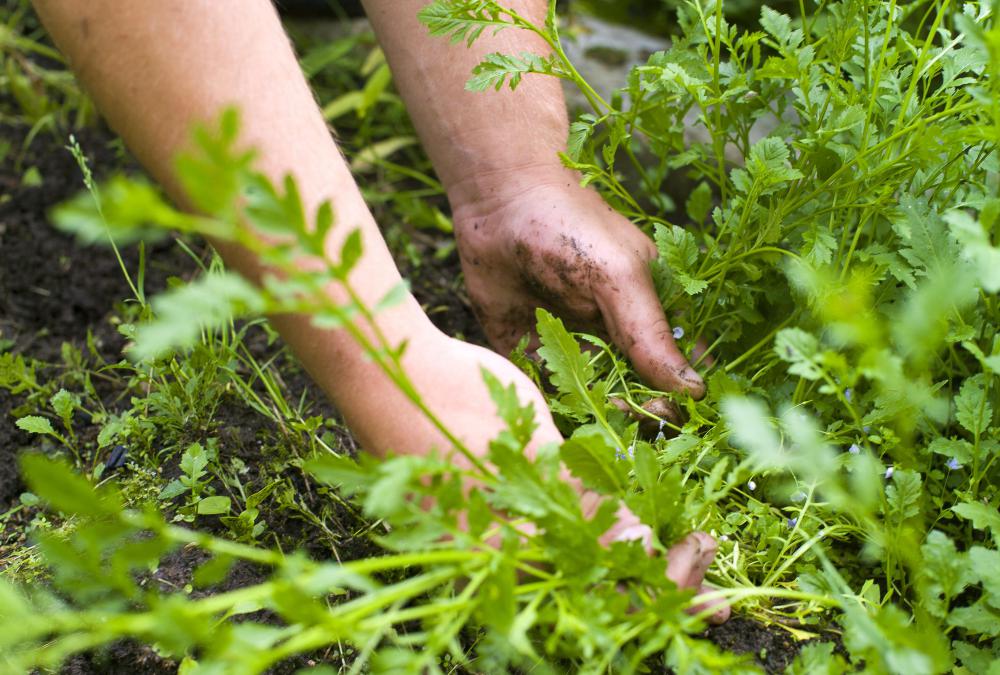At WiseGEEK, we're committed to delivering accurate, trustworthy information. Our expert-authored content is rigorously fact-checked and sourced from credible authorities. Discover how we uphold the highest standards in providing you with reliable knowledge.
How do I Mulch a Tree?
Mulch has many uses in the landscape. Not only does it create an attractive layer under landscape trees and plants, it also improves moisture retention; regulates soil temperature; suppresses weed growth; and when you use organic materials, it improves the soil nutrient levels and quality each year. A good layer of mulch around a young, newly planted tree will help the sapling survive the stress of transplanting, while mulching a mature tree yearly will keep it healthy for years. While mulch has few negative effects, improperly applied mulch can be deadly for young and mature trees alike.
To properly apply mulch, spread a layer about 2 to 4 inches (5 to 10 cm) thick over the soil at the base of the tree. Remove all weeds and weed roots prior to applying the mulch layer. Extend the mulch layer in a circle out to the area under the tips of the outermost branches. When you mulch a tree, hold the mulch layer back from the trunk about 3 inches (8 cm). Do not push the mulch layer up against the trunk of the tree, as it is likely to cause the trunk to rot.

The best time to mulch a tree is in the spring after the ground thaws. Be sure to wait until the ground thaws, or the mulch layer will hinder the ground from thawing around the trees roots which could damage the tree. Though spring is the ideal time to mulch a tree, a layer of mulch can be applied any time of year. Mulch newly planted trees immediately after planting to help the soil retain moisture around the root system.

There are a variety of types of mulch that can be used to mulch a tree. These are divided into organic and inorganic types. Organic materials include leaves, wood chips, sawdust, straw, compost and other plant-based products that will break down over time. Non-organic mulches include pebbles, landscape cloth, small stones and shredded rubber material.
There are benefits and drawbacks to both types of mulch when using them to mulch a tree. Organic mulch materials break down over time, gradually increasing the quality of the soil around the base of the tree. Organic mulch also needs to be replaced at least once a year, which can be costly and time consuming. Non-organic materials do not have to be replaced, but you also lose the benefit of improved soil around the tree.
AS FEATURED ON:
AS FEATURED ON:












Discuss this Article
Post your comments